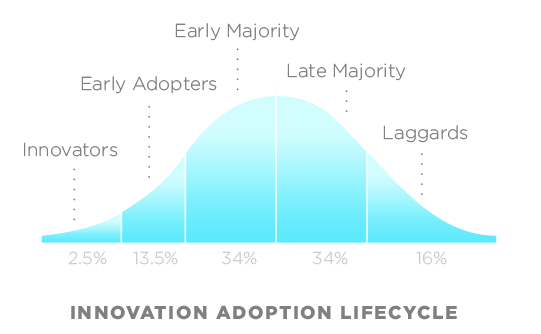The comment below provided an opportunity to reflect on some of the challenges around execution of community social media, namely individuals and community’s resistance to such a change.
[@johnnydegrowth](https://micro.blog/johnnydegrowth) I am more than a little in favor of community media, which is why I'd like to briefly describe what I feel is missing from the Key Steps
Resistance: (1) Active, there may be some from established interests, but it is the least important, (2) Passive, there may be a tendency by some to turn-off immediately when any discussion of new media or new networks comes up, and (3) Invisible, which is the switching cost of changing from the familiar and locked-in to something new and uncertain.
Active Resistance This is represented by those people who are so attached to the current corporate platforms that they actively work to thwart the implementation of community social media. The two main types of people I could see doing this behavior would be those with large following on corporate social media and those with moderation power within communities. In both cases it stems from fear, and since the power of community social media is that it’s within a small community, based approached directly with the people in question. That doesn’t mean you’ll convince everyone, but a walk and conversation can carry huge weight.
Passive Resistance where people are either turned off by something new, or so against social media in general that they work against adoption. In both of these cases I believe that education (here’s how corporate social media hurts our community) combined with critical mass of adoption. Most people don’t have time, desire, or energy for “yet-another-social-media”. If you recall most people left Friendster for MySpace, and then MySpace for FB. In both cases it took other people’s adoption to get them over the curve.
Invisible Resistance will come from it just being hard to do new things. Facebook, at this point, is comfortable. Not everyone likes the Microblogging format of Twitter/X/Bluesky. I’ve been trying to get more people using Signal and some people really don’t want to download a new communications application, and that will only be amplified by social media.
It’s worth framing the areas of resistance by looking at the technology adoption curve. I believe that passive and invisible resistance aren’t based on inherent personas, but more of where people will fall on the adoption curve.

There’s a cadre of people on the island who are already exploring non-corporate social media like Mastodon and Pixelfed. Those people will provide the initial adoption, testing, feedback, etc. They already see the need for this to succeed and are motivated to work through challenges. They are the innovators on the curve and will in essence help design the minimum viable experience.
Key to the strategy are having the next cohort, the early adopters, be ones who are capable and committed to seeding content. These are people that will want to know it’s stable and working. They’re fine if it’s a bit clunky to get on, as long as they can see how their core individual or organizational needs are met, they’ll give it a go. I don’t believe the early adopters will involve some magical adoption, but instead stem from highlighting the need, showing the solution, and making the ask to give it a go to see the content.
Where you’ll start to see more of the resistance will be in the later cohorts, but I believe it goes down dramatically if you’re in front of people at the right time, with the right offering, for what type of adopter they are.
A good way to think about the technology adoption curve is a series of gates. Don’t try to jump ahead to mass adoption if you don’t have the fundamentals down, and you’ll know you have the fundamentals down when the previous cohort is actively using and receiving value from it.
Don’t try to get the anti-technology person who is begrungingly on social media to be an early adopter, make sure the whole value chain is there and their core experience on corporate media is replaceable before making the ask. Don’t put up posters around town with QR codes pointing them to the sign up when it’s barely off the ground.
Being mindful of where people are at and meeting them there will be vital.